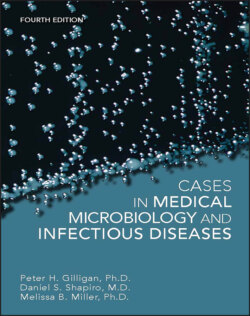Читать книгу Cases in Medical Microbiology and Infectious Diseases - Melissa B. Miller - Страница 25
Antigen detection
ОглавлениеVisual examination of a clinical specimen is not the only means by which an infectious agent can be directly detected. A variety of tests have been developed that, like DFA, are dependent on the availability of highly specific antibodies to detect antigens of specific bacteria, fungi, viruses, and parasites. The most widely used antigen detection tests are various formats of the enzyme immunoassay or the latex agglutination assay. These tests take anywhere from 10 minutes to 2 hours. The test most widely used is a 10- to 15-minute enzyme immunoassay for the detection of group A streptococci. The sensitivity of these various formats has been reported to be 80 to 90%, with specificity usually greater than 95%. In the United States, there are more than 50 different test formats marketed for the detection of this organism. The test is done in a wide variety of laboratories, clinics, and physicians’ offices. Antigen detection tests are widely used in the United States to detect a variety of infectious agents, including Cryptococcus neoformans, Clostridium difficile toxin, respiratory syncytial virus, rotavirus, influenza virus, and Giardia and Cryptosporidium spp. It should be noted, however, that as more molecular tests become commercially available and are used as reference methods, the sensitivities of many of the rapid antigen tests deteriorate. For example, published sensitivities for rapid antigen tests for influenza are as low as 10% and those for respiratory syncytial virus are as low as 59%.
